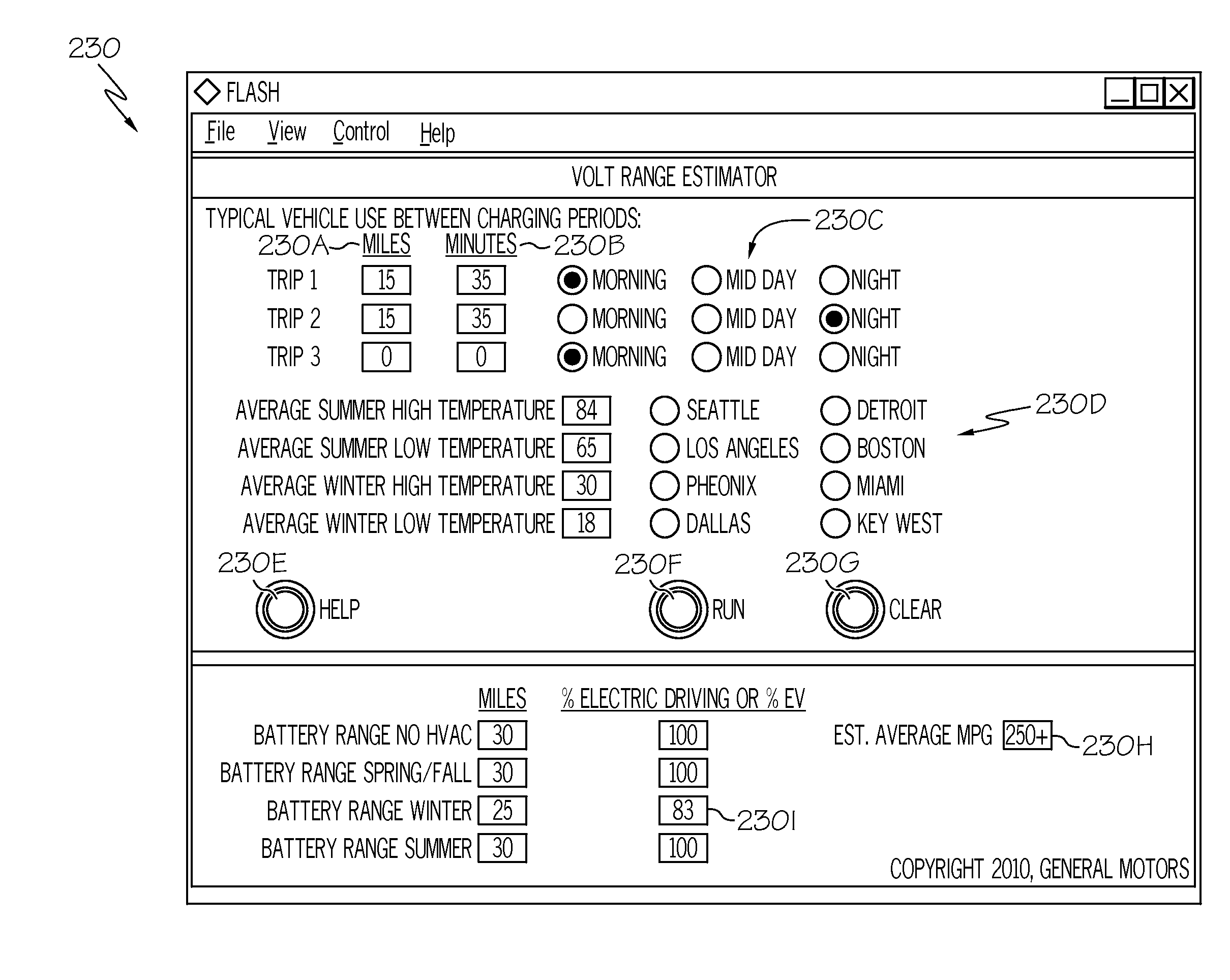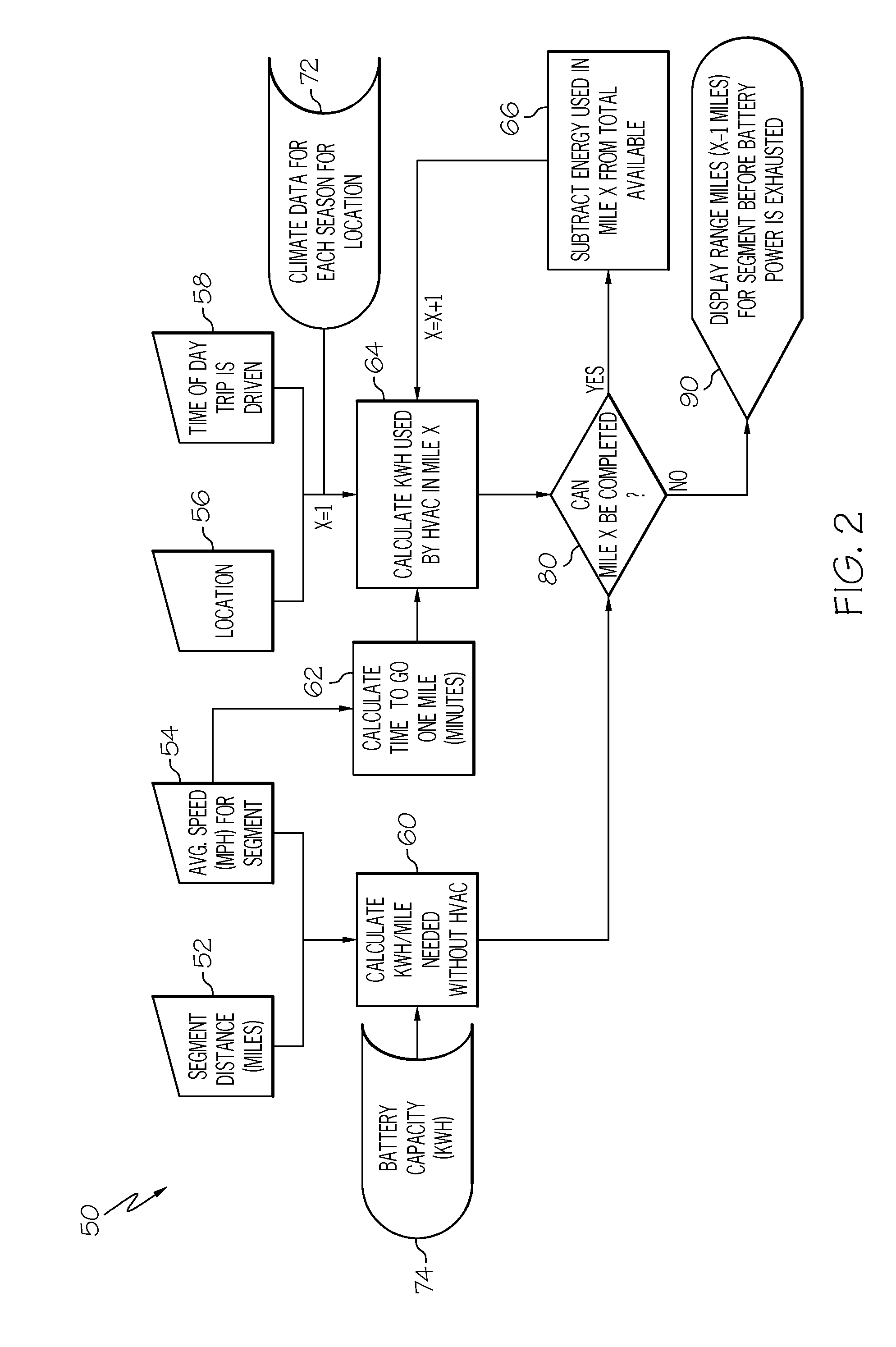Electric driving range calculator
a calculator and driving range technology, applied in the direction of batteries/cells, instruments, process and machine control, etc., can solve the problems of complex methodologies, inability of vehicular operators to correlate driving distance with available battery charge, and complex methodologies that require extensive training of engineers, researchers, computer programmers, etc., and achieve the effect of convenient integration
- Summary
- Abstract
- Description
- Claims
- Application Information
AI Technical Summary
Benefits of technology
Problems solved by technology
Method used
Image
Examples
Embodiment Construction
[0019]Referring first to FIG. 1, a vehicle 1 includes a hybrid propulsion system in the form of a battery pack 10 and a conventional ICE 20. As mentioned above, such a vehicle is known as an EREV. Battery pack 10 employs numerous battery modules 30 that are typically arranged in a repeating array as shown. In one typical example, battery pack 10 may about two hundred individual battery cells, although it will be appreciated by those skilled in the art that additional or fewer cells may be needed, depending on the power required. It will be further appreciated by those skilled in the art that vehicle 1 may not require an ICE 20; in such case, rather than being an EREV, it is an EV; either form is equally compatible with the present invention. The vehicle 1 is shown as having a dashboard 40 with a display screen (or more simply, display) 130 as a way to provide informational output, as will be discussed in more detail below.
[0020]Referring next to FIG. 2, steps in using the empirical ...
PUM
 Login to View More
Login to View More Abstract
Description
Claims
Application Information
 Login to View More
Login to View More - R&D
- Intellectual Property
- Life Sciences
- Materials
- Tech Scout
- Unparalleled Data Quality
- Higher Quality Content
- 60% Fewer Hallucinations
Browse by: Latest US Patents, China's latest patents, Technical Efficacy Thesaurus, Application Domain, Technology Topic, Popular Technical Reports.
© 2025 PatSnap. All rights reserved.Legal|Privacy policy|Modern Slavery Act Transparency Statement|Sitemap|About US| Contact US: help@patsnap.com



